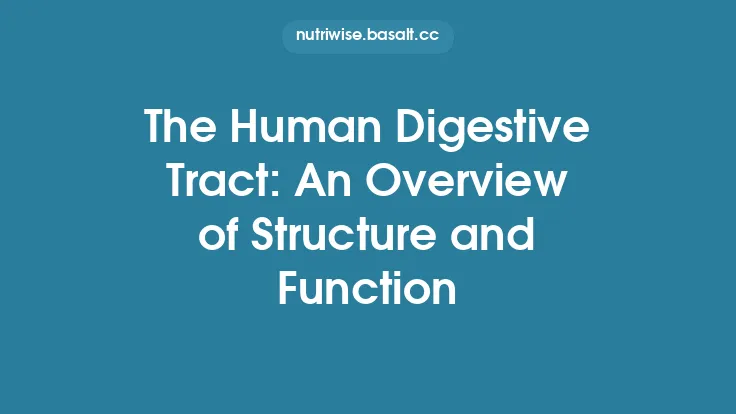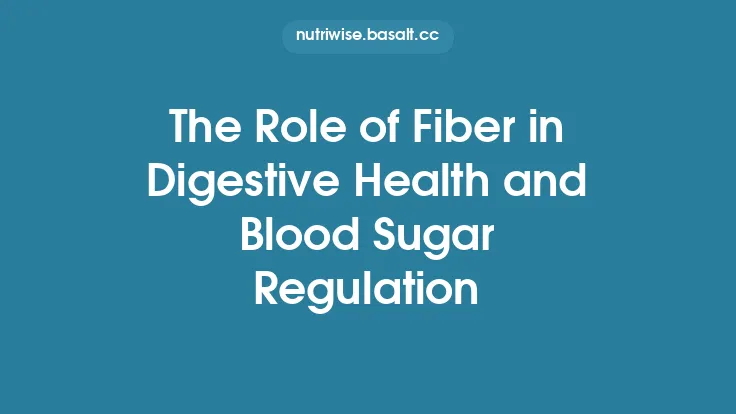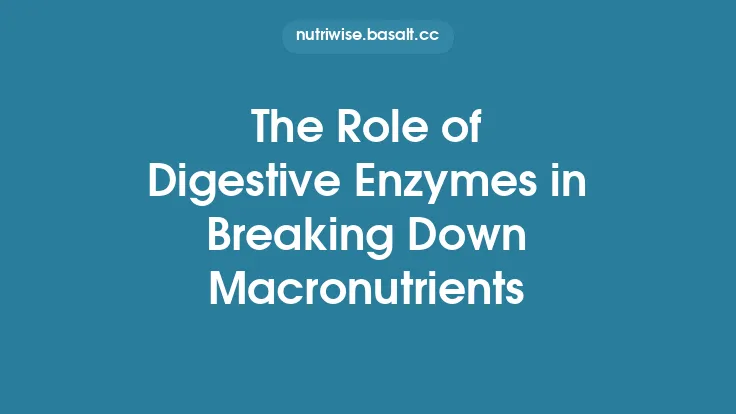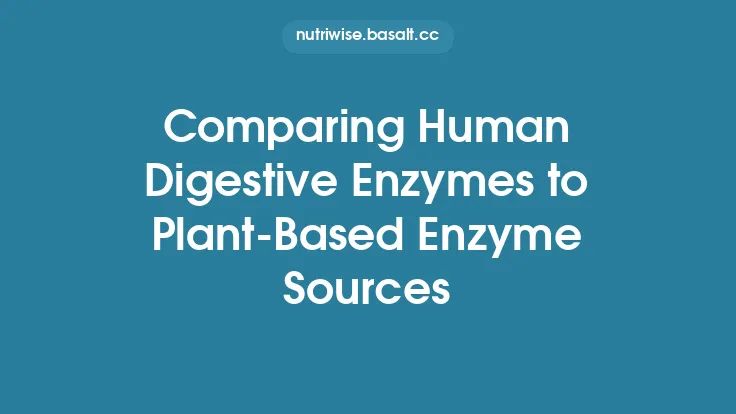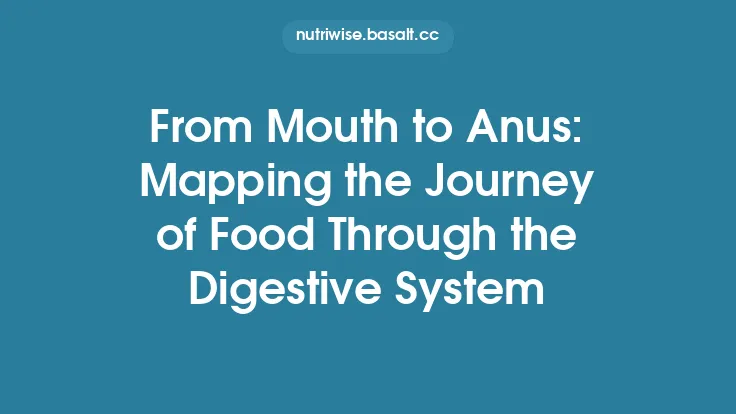The human digestive tract is a dynamic biochemical reactor where a cascade of enzymes transforms complex food matrices into absorbable nutrients. While most introductory texts describe *what enzymes do, a deeper appreciation of how* they work emerges from the study of enzyme kinetics. By quantifying the rates at which digestive enzymes convert substrates into products, we can predict nutrient availability, diagnose malabsorption disorders, and design more effective dietary interventions. This article explores the kinetic principles that govern enzymatic activity throughout the gastrointestinal (GI) system, emphasizing the parameters, models, and experimental techniques that make kinetic analysis possible.
Fundamental Concepts of Enzyme Kinetics
Enzyme kinetics is the quantitative description of the relationship between enzyme activity and the concentrations of substrates, products, and the enzyme itself. The classic framework, developed in the early 20th century, rests on a few core assumptions:
- Formation of an Enzyme–Substrate Complex (ES) – The enzyme (E) binds its substrate (S) to form a transient ES complex.
- Steady‑State Approximation – The concentration of ES remains relatively constant during the initial phase of the reaction, allowing the rate of product formation (v) to be expressed as a function of substrate concentration.
- Irreversibility of the Initial Reaction – In the early time points, product accumulation is negligible, so the reverse reaction (P → S) can be ignored.
Under these conditions, the Michaelis–Menten equation describes the reaction velocity:
\[
v = \frac{V_{\max}[S]}{K_m + [S]}
\]
where:
- \(V_{\max}\) is the maximal rate achieved when the enzyme is saturated with substrate.
- \(K_m\) (Michaelis constant) is the substrate concentration at which the reaction proceeds at half‑\(V_{\max}\). It reflects the affinity of the enzyme for its substrate; a low \(K_m\) indicates high affinity.
- \(k_{cat}\) (turnover number) is the number of substrate molecules converted to product per enzyme active site per unit time when the enzyme is saturated. It is related to \(V_{\max}\) by \(V_{\max}=k_{cat}[E]_{\text{total}}\).
These parameters provide a concise description of an enzyme’s catalytic efficiency, often expressed as the ratio \(k_{cat}/K_m\). In the context of digestion, they allow us to compare how quickly a given enzyme can process a nutrient under physiological substrate concentrations.
Applying Michaelis–Menten Theory to Digestive Processes
Digestive enzymes operate in a highly heterogeneous environment: substrate concentrations fluctuate dramatically as food moves through the GI tract, and enzyme concentrations vary with secretion rates. Nevertheless, the Michaelis–Menten model remains a useful first approximation for many digestive reactions.
Example: Starch Hydrolysis in the Small Intestine
Consider a generic α‑glucosidase that cleaves maltose into glucose. If the luminal maltose concentration after pancreatic amylase activity averages 5 mM, and the enzyme’s kinetic constants are \(K_m = 0.8\) mM and \(k_{cat}=120\) s⁻¹, the reaction velocity can be estimated:
\[
v = \frac{k_{cat}[E]_{\text{total}}[S]}{K_m + [S]}
\]
Assuming an active enzyme concentration of 0.2 µM, the maximal rate is:
\[
V_{\max}=k_{cat}[E]_{\text{total}} = 120\ \text{s}^{-1} \times 0.2\ \mu\text{M}=24\ \mu\text{M·s}^{-1}
\]
Plugging the substrate concentration:
\[
v = \frac{24\ \mu\text{M·s}^{-1} \times 5\ \text{mM}}{0.8\ \text{mM}+5\ \text{mM}} \approx 20\ \mu\text{M·s}^{-1}
\]
Thus, under typical post‑prandial conditions, the enzyme operates at ~83 % of its maximal capacity, indicating that substrate availability is the primary limiting factor rather than enzyme abundance.
Scaling to Whole‑Organ Kinetics
When extending from a single enzyme to the collective activity of multiple enzymes acting sequentially (e.g., proteolysis followed by peptide transport), the overall rate is often dictated by the *slowest* step—a concept known as the rate‑limiting step. Kinetic modeling can therefore identify bottlenecks in nutrient breakdown, guiding therapeutic strategies such as enzyme supplementation or dietary modification.
Kinetic Parameters Across Different Segments of the Tract
The GI tract can be divided into functional zones, each characterized by distinct enzyme secretions, substrate loads, and transit times. Kinetic parameters measured in vitro often differ from in vivo values due to these contextual factors.
| Segment | Dominant Enzyme Classes | Typical \(K_m\) (µM) | Typical \(k_{cat}\) (s⁻¹) | Approx. Transit Time |
|---|---|---|---|---|
| Mouth | Salivary carbohydrases | 200–800 | 30–80 | < 30 s |
| Stomach | Pepsin‑like proteases | 150–500 | 10–30 | 1–2 h |
| Duodenum | Pancreatic carbohydrases, proteases, lipases | 50–300 | 50–150 | 2–3 h |
| Jejunum | Brush‑border disaccharidases, peptidases | 10–100 | 80–200 | 3–4 h |
| Ileum | Peptidases, nucleotidases | 5–50 | 60–120 | 4–5 h |
| Colon | Bacterial carbohydrate‑active enzymes (not covered here) | — | — | 12–48 h |
These ranges illustrate that enzymes in the distal small intestine often exhibit lower \(K_m\) values, reflecting an adaptation to the dwindling substrate concentrations as digestion proceeds. Conversely, the high \(k_{cat}\) values in the duodenum compensate for the rapid influx of partially digested macromolecules.
Influence of Enzyme Concentration and Secretion Dynamics
Enzyme concentration (\([E]{\text{total}}\)) directly scales \(V{\max}\). In the digestive system, enzyme levels are not static; they are regulated by neural, hormonal, and paracrine signals.
- Cephalic Phase – Anticipatory neural signals stimulate salivary and gastric secretions before food arrival, priming the system.
- Gastric Phase – Gastrin and vagal inputs increase pepsinogen release, raising the effective enzyme pool in the stomach.
- Intestinal Phase – Secretin, cholecystokinin (CCK), and enteric hormones trigger pancreatic enzyme secretion and bile release, dramatically expanding the enzymatic capacity in the duodenum.
Mathematically, the time‑dependent enzyme concentration can be expressed as:
\[
[E]{\text{total}}(t) = [E]{\text{baseline}} + \int_0^t R_{\text{secretion}}(\tau) \, d\tau - \int_0^t R_{\text{degradation}}(\tau) \, d\tau
\]
where \(R_{\text{secretion}}\) and \(R_{\text{degradation}}\) are the rates of enzyme release and inactivation, respectively. Incorporating these functions into kinetic models enables simulation of post‑prandial enzyme activity curves, which are valuable for predicting nutrient absorption kinetics.
Substrate Availability and Transit Time
The concentration of a given substrate in the lumen is a moving target, shaped by:
- Ingestion Load – The initial amount of macronutrient introduced.
- Mechanical Mixing – Peristaltic contractions and segmentation enhance substrate–enzyme contact.
- Dilution and Absorption – Water influx and nutrient uptake lower substrate concentrations downstream.
A simple compartmental model treats each GI segment as a well‑mixed reactor with an inflow (from the upstream segment) and an outflow (to the downstream segment). The substrate balance for a segment \(i\) can be written:
\[
\frac{d[S_i]}{dt} = Q_{i-1\to i}[S_{i-1}] - Q_{i\to i+1}[S_i] - v_i
\]
where \(Q\) denotes volumetric flow rates and \(v_i\) is the enzymatic consumption rate given by the Michaelis–Menten expression for that segment. Solving this set of differential equations yields time‑resolved substrate profiles, which can be compared against measured concentrations in aspirated intestinal fluids.
Non‑Michaelian Behaviors in the Gastrointestinal Environment
Although Michaelis–Menten kinetics provide a solid baseline, several phenomena in the GI tract deviate from its assumptions:
- Substrate Inhibition – At very high concentrations, some enzymes exhibit reduced activity due to binding of excess substrate to an inhibitory site. This is modeled by adding an inhibition term:
\[
v = \frac{V_{\max}[S]}{K_m + [S] + \frac{[S]^2}{K_i}}
\]
where \(K_i\) is the inhibition constant.
- Allosteric Regulation – Certain brush‑border enzymes display cooperative binding, better described by the Hill equation:
\[
v = V_{\max}\frac{[S]^n}{K_{0.5}^n + [S]^n}
\]
with \(n\) (Hill coefficient) indicating the degree of cooperativity.
- Enzyme Immobilization on Mucosal Surfaces – Enzymes tethered to the epithelial membrane experience restricted diffusion, leading to “surface‑limited” kinetics. In such cases, the reaction rate may be proportional to the enzyme surface density rather than its bulk concentration.
- Microbial Interactions – In the distal small intestine, resident microbiota can produce or degrade substrates, adding parallel reaction pathways that alter apparent kinetic parameters.
Recognizing these complexities is essential when interpreting kinetic data obtained from in vivo studies or when constructing physiologically realistic models.
Experimental Approaches to Measuring Digestive Kinetics
Accurate kinetic parameters require careful experimental design. The most common methodologies include:
- In Vitro Enzyme Assays – Purified enzymes are incubated with defined substrate concentrations under controlled pH and ionic strength. Reaction velocities are measured spectrophotometrically (e.g., release of p‑nitrophenol) or via high‑performance liquid chromatography (HPLC). Data are fitted to Michaelis–Menten or alternative models to extract \(K_m\) and \(V_{\max}\).
- Intestinal Perfusion Studies – Segments of the small intestine (often in animal models) are perfused with substrate solutions while sampling outflow. This approach preserves the native mucosal environment, allowing measurement of *effective* kinetic parameters that incorporate surface immobilization and transport effects.
- Stable Isotope Tracers – In human subjects, isotopically labeled nutrients (e.g., ^13C‑glucose) are ingested, and the appearance of labeled metabolites in blood is monitored. Kinetic modeling of the tracer data yields estimates of digestion rates and absorption kinetics.
- Microfluidic “Gut‑on‑a‑Chip” Platforms – These devices mimic peristaltic flow, mucus layers, and epithelial cell architecture, enabling real‑time observation of enzyme–substrate interactions under physiologically relevant shear stresses.
- Mathematical Inverse Modeling – By fitting whole‑body nutrient appearance curves (e.g., post‑prandial glucose excursions) to compartmental models, one can back‑calculate effective kinetic parameters for the ensemble of digestive enzymes.
Each technique balances ecological validity against experimental control. Combining multiple approaches often provides the most robust kinetic dataset.
Clinical Implications of Altered Kinetic Profiles
Variations in enzyme kinetics can manifest as digestive disorders or influence drug–nutrient interactions.
- Exocrine Pancreatic Insufficiency (EPI) – Reduced secretion of pancreatic enzymes lowers \(V_{\max}\) for carbohydrate, protein, and fat digestion. Kinetic modeling predicts a shift from substrate‑saturated to substrate‑limited regimes, explaining steatorrhea and malabsorption.
- Celiac Disease – Villous atrophy diminishes brush‑border enzyme density, effectively decreasing \([E]_{\text{total}}\) and raising the apparent \(K_m\) for disaccharide hydrolysis. Patients often experience lactose intolerance secondary to reduced lactase activity.
- Genetic Polymorphisms – Variants in genes encoding digestive enzymes can alter catalytic efficiency (e.g., a point mutation that raises \(K_m\) for a specific protease). Such changes may affect protein utilization and influence dietary recommendations.
- Drug Interactions – Certain oral medications act as competitive inhibitors of digestive enzymes (e.g., some antacids bind to pepsin). Understanding the inhibition constant (\(K_i\)) helps predict the magnitude of nutrient absorption reduction.
Clinicians can use kinetic data to tailor enzyme replacement therapy, adjust macronutrient composition, or schedule medication timing to minimize adverse effects on digestion.
Modeling Digestive Kinetics for Nutritional Planning
Nutritionists and food technologists increasingly rely on kinetic models to design meals that optimize nutrient delivery. A typical workflow involves:
- Defining the Meal Matrix – Quantify the amounts of carbohydrates, proteins, and fats, and estimate the initial substrate concentrations entering the stomach.
- Assigning Enzyme Kinetic Parameters – Use literature values for \(K_m\), \(k_{cat}\), and enzyme concentrations for each digestive segment, adjusting for individual factors (age, health status).
- Simulating Transit and Mixing – Apply compartmental models that incorporate gastric emptying rates and intestinal motility patterns.
- Predicting Absorption Profiles – Compute the time‑course of monosaccharide, amino acid, and fatty acid appearance in the portal circulation.
- Iterating Meal Composition – Modify macronutrient ratios or incorporate slowly digestible carbohydrates to achieve desired post‑prandial glucose curves or satiety responses.
Such predictive tools are valuable for managing conditions like diabetes, where controlling the rate of glucose appearance is critical, and for athletes seeking optimized energy release during prolonged exercise.
Future Directions and Emerging Technologies
The field of digestive enzyme kinetics is poised for rapid advancement thanks to several emerging trends:
- Single‑Molecule Enzymology – Techniques such as optical tweezers and fluorescence resonance energy transfer (FRET) enable observation of individual enzyme turnover events, revealing heterogeneity that bulk assays mask.
- Artificial Intelligence‑Driven Parameter Estimation – Machine‑learning algorithms can fit complex kinetic models to large datasets (e.g., continuous glucose monitoring combined with dietary logs), extracting hidden kinetic constants.
- CRISPR‑Based Human Models – Engineered intestinal organoids with specific enzyme knock‑outs allow direct measurement of kinetic consequences in a human‑relevant context.
- In Situ Spectroscopy – Miniaturized fiber‑optic probes inserted endoscopically can monitor real‑time substrate depletion and product formation, providing unprecedented in vivo kinetic data.
- Integration with Metabolomics – Comprehensive profiling of luminal metabolites, coupled with kinetic modeling, will illuminate how enzyme activity shapes the broader metabolic landscape of the gut.
These innovations promise to refine our quantitative understanding of digestion, ultimately translating into more precise dietary guidelines, better therapeutic enzyme formulations, and improved management of gastrointestinal diseases.
In summary, enzyme kinetics offers a powerful lens through which to view the intricate choreography of nutrient breakdown in the human digestive tract. By quantifying how enzyme concentration, substrate availability, and transit dynamics intersect, researchers and clinicians can predict digestive efficiency, diagnose dysfunction, and design interventions that align with the body’s natural biochemical rhythms. The continued convergence of experimental rigor, mathematical modeling, and cutting‑edge technology will ensure that kinetic insights remain at the forefront of food science and digestive health.
